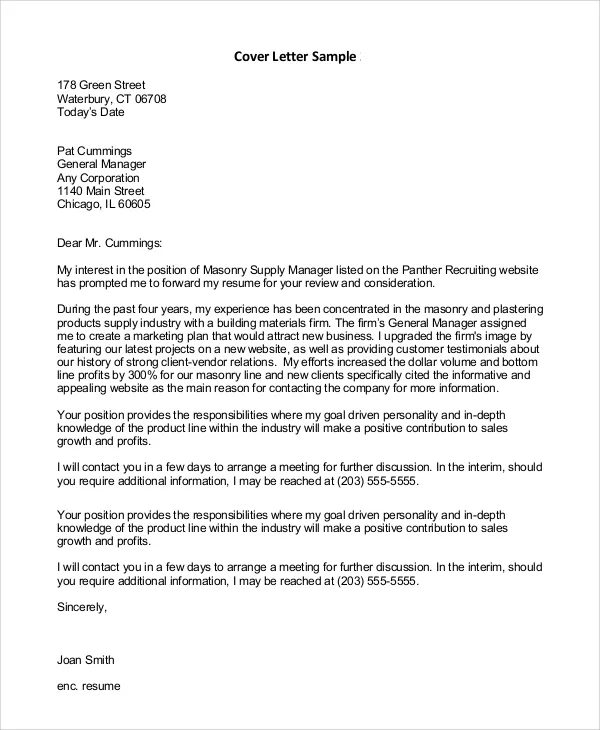Why Cover Letter Examples Matter
In the competitive world of job applications, a well-crafted cover letter can be the key that unlocks your dream job. It’s not just about repeating what’s on your resume; it’s your chance to introduce yourself, showcase your personality, and demonstrate why you’re the perfect fit for the role. But where do you start? Cover letter examples provide a valuable roadmap, offering insights into effective writing styles, formatting, and content. They serve as a template, guiding you through the process and helping you avoid common pitfalls. By studying these examples, you can learn how to articulate your skills, experience, and enthusiasm in a way that captures the attention of hiring managers. The right example will make you stand out.
Understanding Cover Letter Basics
Before diving into examples, it’s essential to understand the fundamental elements of a strong cover letter. Begin with a professional header including your contact information and the date. Address the hiring manager by name, if possible; personalized greetings show that you’ve done your research and are genuinely interested in the position. The body of your cover letter should consist of three to four concise paragraphs. Start with a compelling introduction that grabs the reader’s attention and states the specific position you’re applying for. In the following paragraphs, elaborate on your relevant experience, skills, and accomplishments. Finally, conclude with a strong call to action, expressing your enthusiasm for the opportunity and your eagerness to hear back from them. Remember to proofread your cover letter carefully for any grammatical errors or typos, as these can create a negative impression.
Cover Letter Examples
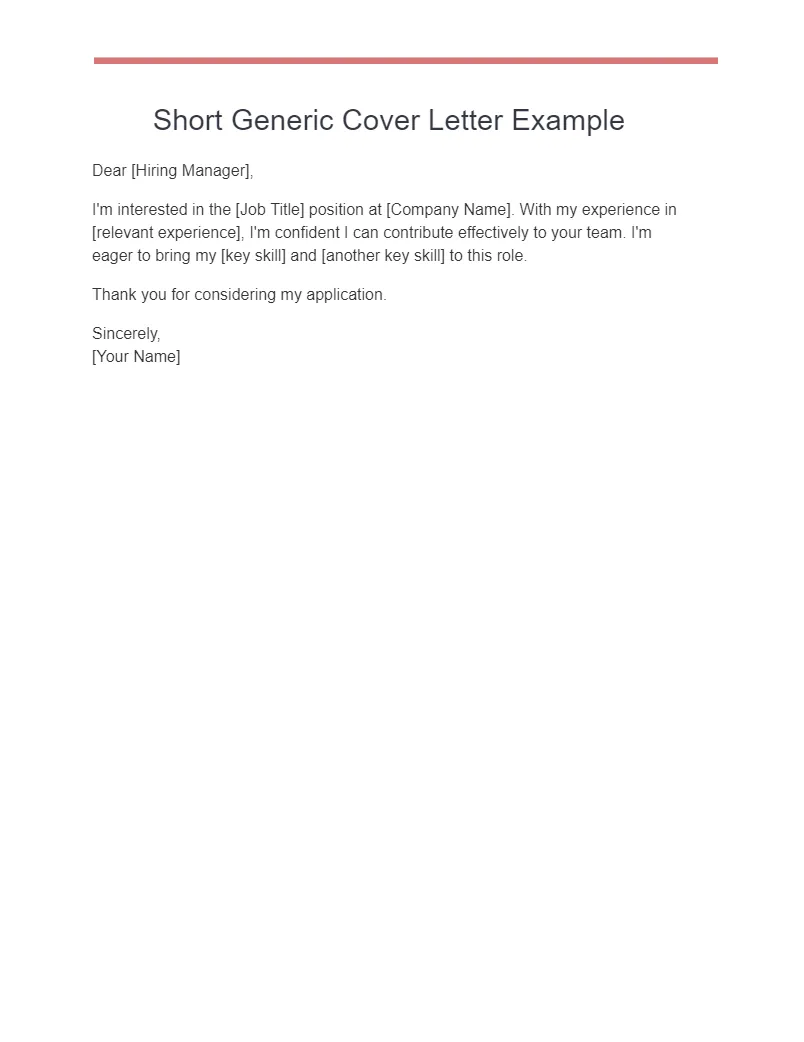
Below are five different cover letter examples tailored to diverse situations, showcasing how to adapt your approach to different job types and career stages. These examples cover entry-level roles, career changes, skill-specific applications, networking efforts, and follow-up strategies. Each example is designed to highlight particular strengths and experiences, ensuring you can customize your application to resonate with the specific job requirements and company culture. Consider these examples as starting points; tailor them to your unique circumstances to enhance your chances of success. Each example offers a different approach, allowing you to select the most appropriate format and content for your application. Using these models ensures you provide compelling, customized application for the roles you desire.
Example 1 Entry-Level Cover Letter
This example is designed for recent graduates or individuals with limited work experience. The focus is on highlighting academic achievements, relevant coursework, internships, volunteer work, and any transferable skills. The tone is enthusiastic and eager, showcasing your potential and willingness to learn. The cover letter should express strong interest in the position and explain how your education and any relevant projects align with the job requirements. Emphasize your soft skills such as communication, teamwork, and problem-solving abilities. Use this example to present yourself as a motivated and adaptable candidate ready to contribute to the company’s success. Always proofread to make sure the grammar, punctuation, and flow make sense.
Key Elements to Highlight
When writing an entry-level cover letter, highlight the following key elements: academic accomplishments (GPA, honors), relevant coursework, internship experiences (even brief ones), volunteer activities demonstrating soft skills, projects that showcase skills or knowledge related to the job, and any extracurricular activities demonstrating leadership or teamwork. Express enthusiasm for the company and the specific role. Mention any company values or initiatives that resonate with you. Explain your understanding of the role’s responsibilities and how you plan to contribute. Customize the letter to the specific job description. Use the language and keywords from the job posting. Show your knowledge and desire to learn. This helps present yourself as a strong candidate, despite limited work experience.
Example 2 Cover Letter for Career Change
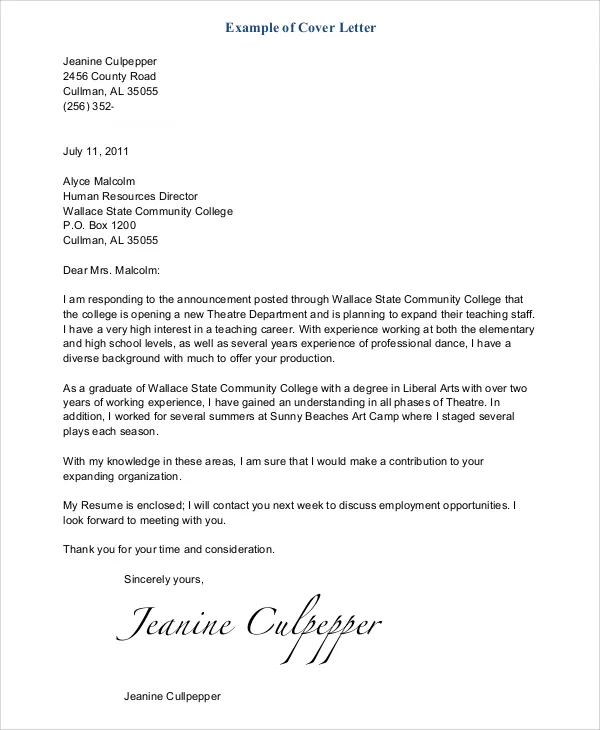
If you’re making a career change, this example provides a structure for transitioning your skills and experience from one industry to another. The focus is on transferable skills and how they relate to the new role. Identify skills that can be applied across industries, such as communication, project management, and problem-solving. Highlight relevant projects, accomplishments, or experiences that demonstrate your aptitude for the new field. Emphasize your adaptability and willingness to learn new skills. Show the hiring manager how your experience, though not directly related, has prepared you for the new position. This example guides you to focus on the value of your skills, highlighting your potential, adaptability, and enthusiasm for transitioning. It emphasizes that your previous experience has set you up for success.
Focus on Transferable Skills
When changing careers, make sure you highlight transferable skills such as project management, communication, leadership, customer service, and analytical skills. These are crucial, regardless of the industry. Identify commonalities between your current and desired roles and tailor your cover letter to highlight them. Provide specific examples of how you’ve used these skills in your previous roles. Quantify your accomplishments whenever possible to show the impact you’ve made. Address any potential gaps in your experience and explain how you plan to bridge them. Showcase your enthusiasm for the new field and demonstrate a proactive approach to learning. Show your adaptability and explain how you have demonstrated a willingness to embrace new challenges in the past. Make sure to mention the most relevant skills.
Example 3 Cover Letter for Specific Skills
This example is designed to emphasize specific skills that are directly related to the job requirements. The focus is on showcasing your expertise and accomplishments in a concise, impactful manner. Highlight relevant projects, certifications, and training that align with the job description. Provide quantifiable results to demonstrate your proficiency and the value you bring. Use industry-specific keywords to show your understanding of the field and the role. Tailor the letter to the specific skills mentioned in the job posting. Include examples of how you’ve used these skills to achieve positive outcomes. This helps demonstrate your mastery of essential skills and positions you as an ideal candidate. Present your knowledge and experience with confidence and clarity.
Emphasize Relevant Expertise
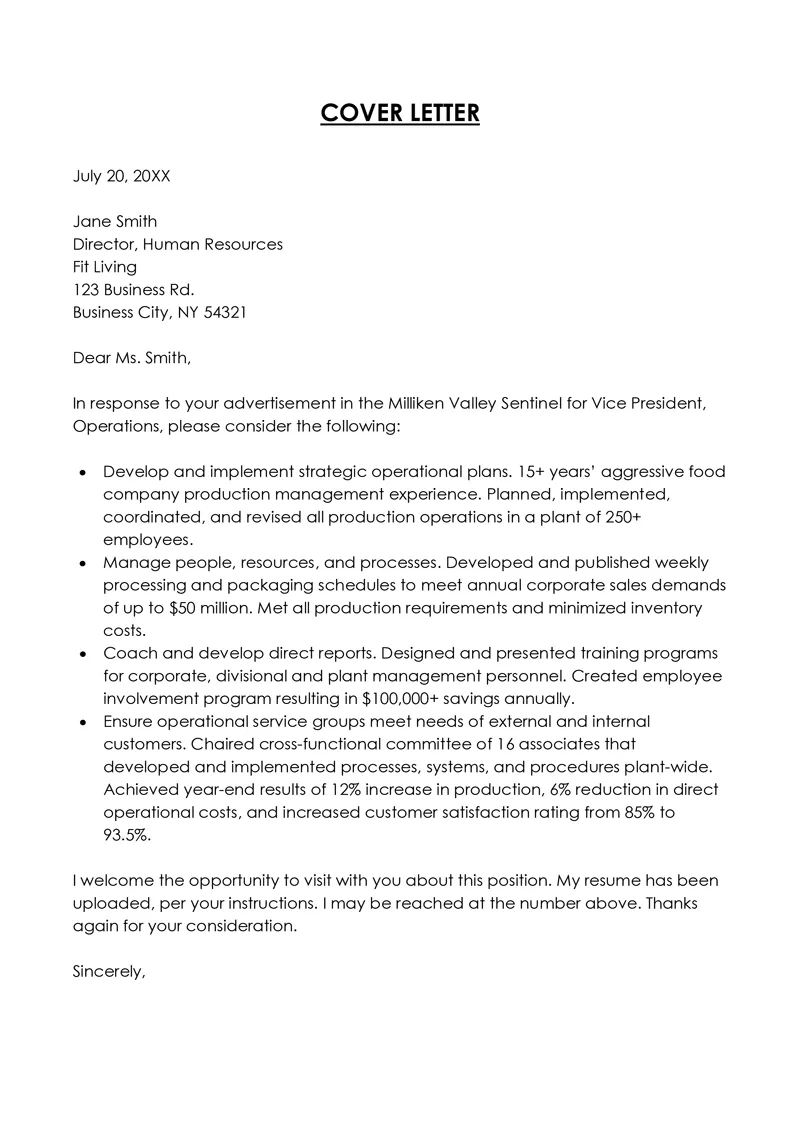
To make your cover letter stand out, emphasize your relevant expertise by identifying the key skills and requirements listed in the job description. Then, provide specific examples of how you’ve used these skills to achieve success in previous roles. Include quantifiable results to demonstrate the impact of your skills (e.g., increased sales by X percent, reduced costs by Y percent). Use industry-specific keywords and phrases to show that you understand the role. Provide any certifications, training, or education relevant to the position. If you have a portfolio or any work samples, make sure you mention them in the cover letter, and if necessary, provide a link. This approach demonstrates to the hiring manager that you are a qualified and results-driven candidate.
Example 4 Cover Letter for Networking
Use this example when you’re applying for a job through a referral or have connected with someone at the company. The focus is on leveraging your network to gain an advantage. Begin by mentioning the person who referred you or the contact you made at the company. Express your appreciation for their help and guidance. Highlight your skills and experiences that align with the role and the company’s needs. Personalize the letter by referring to the conversations or interactions you’ve had with your contact. Emphasize your understanding of the company culture and your enthusiasm for the opportunity. This example demonstrates how you can leverage your network and gain a competitive edge. It also shows your ability to build and maintain professional relationships.
Showcase Your Network and Connections
In a networking cover letter, always start by mentioning the person who referred you or the contact you made. A personalized opening that references your interactions with the contact makes a positive impression on the hiring manager. Briefly express your appreciation for their help. Clearly state the position you are applying for and why you are interested in the role. Highlight the skills and experiences that are relevant to the job description and the company’s needs. Show your understanding of the company’s culture and values. Tailor the letter to the specific conversation or interactions you’ve had with your contact. Demonstrate how your skills and experiences align with the job requirements. Always proofread to maintain the best possible image.
Example 5 Cover Letter for Follow-Up
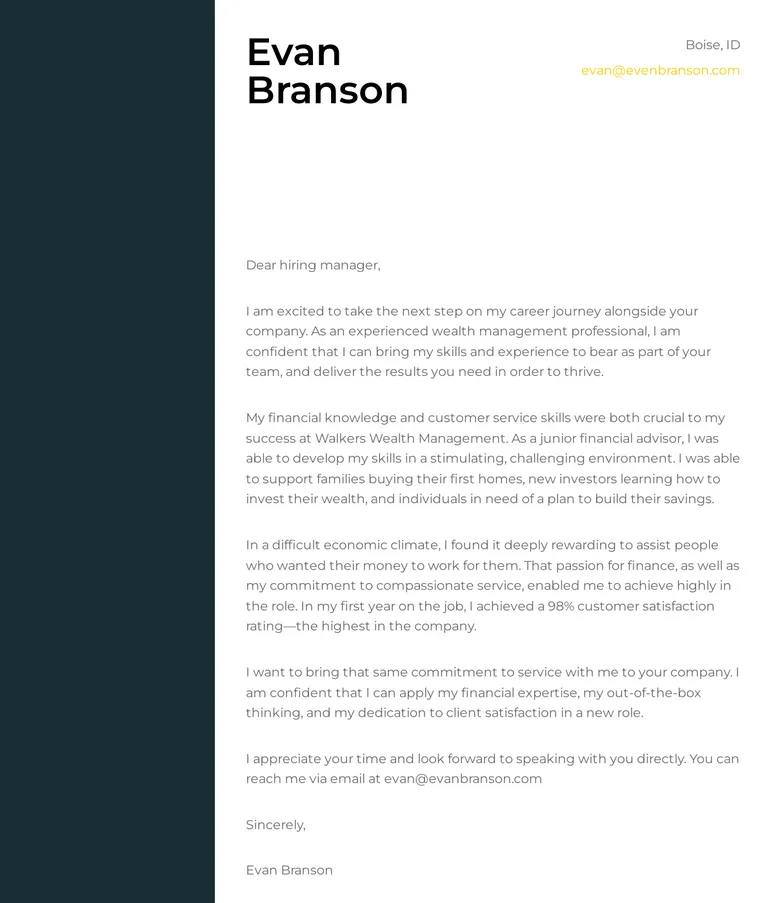
This example is designed for following up on a job application. Use it to reiterate your interest and to provide any new information. Begin by referencing your original application and the position. Reiterate your interest in the role and the company. Briefly summarize your key qualifications and how they align with the job requirements. Use this opportunity to provide any new information or updates (e.g., a recent accomplishment, an updated portfolio). Express your enthusiasm for the opportunity and your continued interest in moving forward. This example allows you to stay on the hiring manager’s radar. It keeps your application top of mind and strengthens your chances of getting an interview.
Express Continued Interest
When writing a follow-up cover letter, always start by referencing your original application and the specific position. Reiterate your interest in the role and the company’s mission. Highlight your key qualifications and experiences that align with the job requirements. Include any new information or updates since your original application, such as a recent project, accomplishment, or updated portfolio. Briefly thank the hiring manager for their time and consideration. Express your enthusiasm for the opportunity and your availability for an interview. Make sure to maintain a professional tone, showing your continued interest and commitment. A well-timed follow-up shows your dedication and increases the likelihood of a positive response.
